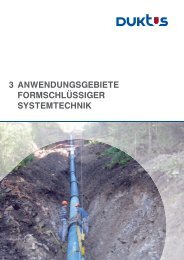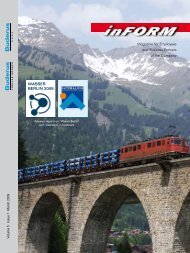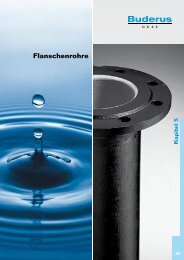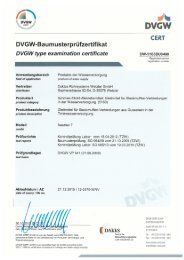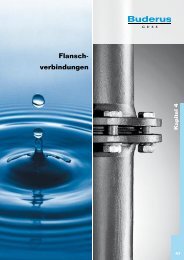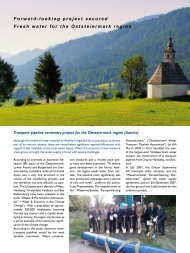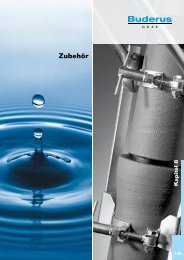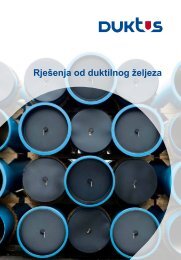WKG pipes - Duktus
WKG pipes - Duktus
WKG pipes - Duktus
You also want an ePaper? Increase the reach of your titles
YUMPU automatically turns print PDFs into web optimized ePapers that Google loves.
Information about <strong>WKG</strong> <strong>pipes</strong><br />
Areas of use<br />
Pipelines at risk of frost, e.g.:<br />
� Bridge with pipelines<br />
� Pipelines laid above ground<br />
� Pipelines laid in the ground with minimal depth of covering<br />
� Pipelines at risk of heat loss.<br />
<strong>WKG</strong> pipe system structure<br />
<strong>WKG</strong> pipeline systems consist of <strong>pipes</strong> and socket bends (MMK,<br />
MMQ) made of ductile cast iron acc. to DIN EN 545 (for water) or DIN<br />
EN 598 (for waste water) with TYTON ® push-in socket connections<br />
acc. to DIN 28 603, with optional longitudinal force-locking.<br />
The <strong>pipes</strong> are wrapped in a thermal insulating layer of hard CFC-free<br />
polyurethane (PUR) foam with average overall density of 80 kg/m 3 .<br />
This hard foam is protected from the effects of the weather in one of<br />
two ways: For exposed (FL) pipelines, with a wrap fold sleeve made of<br />
galvanised steel acc. to DIN EN 1506, or optionally stainless steel; and<br />
for pipelines laid in the ground (EL) with minimal covering and thus with<br />
risk of frost, with an outer sleeve made of PE-HD acc. to DIN EN 253.<br />
The gap in the area around the push-in socket connection is filled out<br />
with a ring made of soft polyethylene (WPE) and sealed with a sheet<br />
metal collar (FL system) or a PE shrink strap (EL system).<br />
Chapter 7<br />
129



